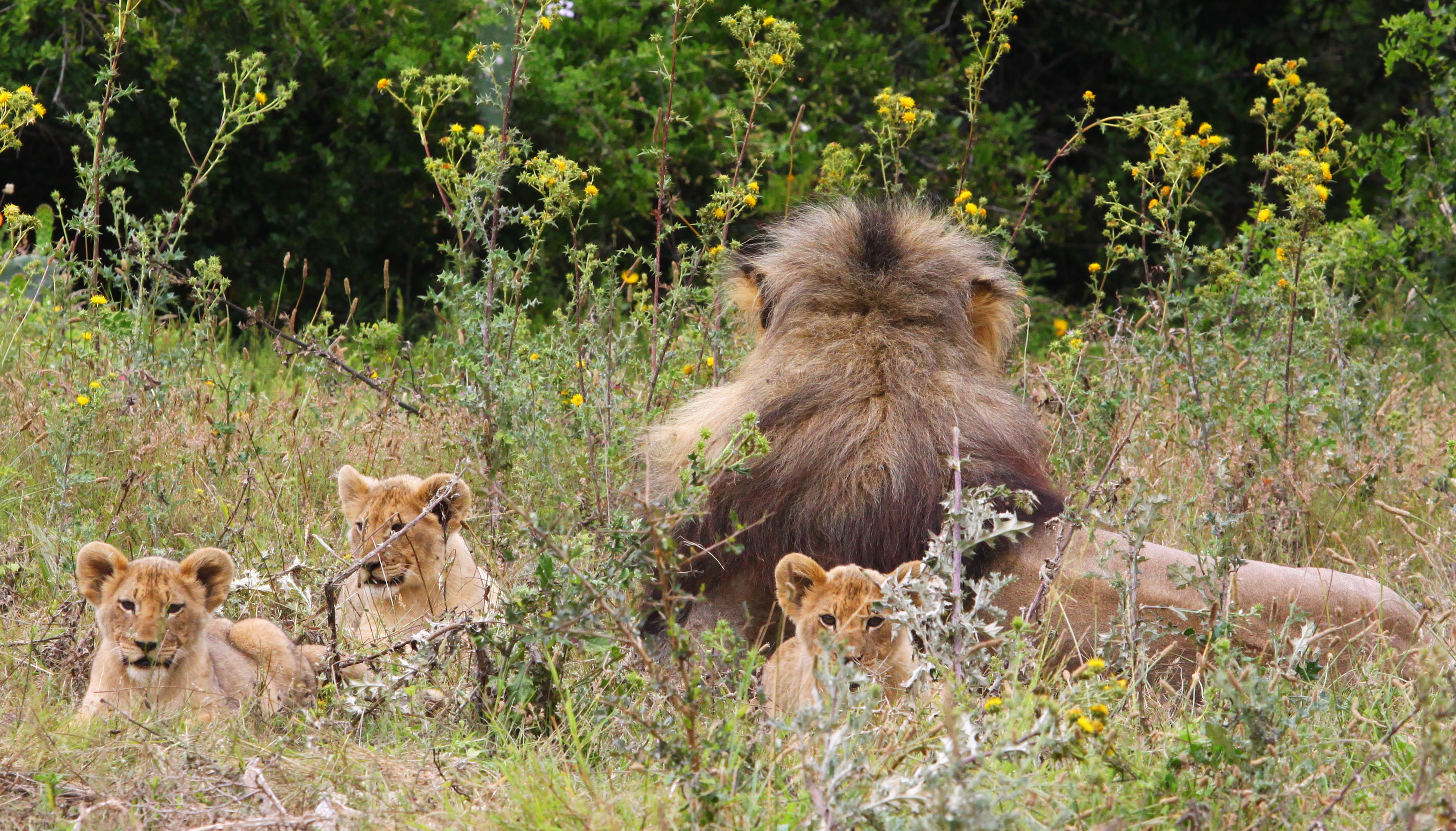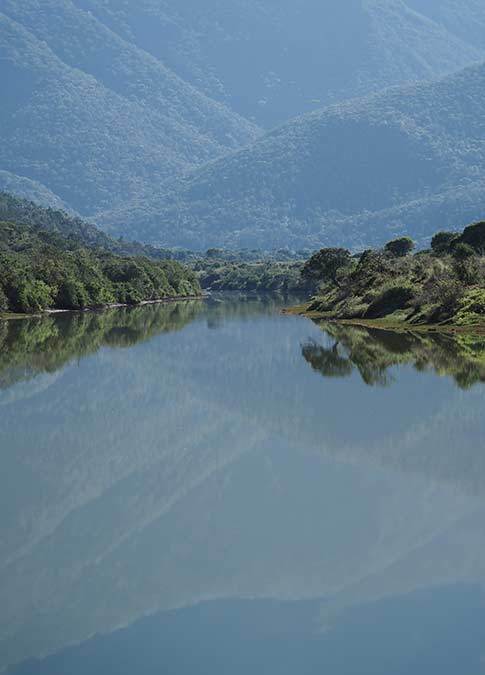November 2011 Newsletter
Hi there folks
Some good news on the Rhino front. One of our baby rhino's that was orphaned in February (as a result of poaching) has befriended the recently orphaned Shamwari baby rhino. A great picture was published in the newspaper recently. The Kariega orphan has been staying at an animal rehabilitation centre at Shamwari, and the good news is that he will be returning home shortly!

The lion cubs are getting really big - it is incredible how fast they grow! Although they are still totally adorable.

Our featured snake this month is the Cape wolf Snake. Enjoy!
Lycophidion capense (Cape Wolf Snake)
Length: 30-40cm; 60 cm max.
Identification: Uniform grey-black body, usually with white-tipped scales. Flattened head and small eyes with vertical pupils. The long recurved (downward curved) teeth give this snake it's common name.
Habitat: Savannah and grassland. Widespread in east, under stones, logs and leaf litter, and in disused termite mounds; prefers damp habitats.
Habits: Nocturnal, Hibernates in termite mounds, with other snakes sometimes, in winter. Kills its prey by biting then constricting it.
Reproduction: Lays three to eight eggs in the summer.
Status: Common; widely distributed.
Venom: None.
Diet: Lizards (Skinks); rarely eats small snakes.
Similar species: Variegated Wolf Snake is slender and white mottling on back; Namibia wolf snake is dark brown above and has brown belly stripe.









